When my husband and I fly, we’ll take every opportunity to redeem our hard-earned points on premium class seats. But when we travel with the kids, the decision isn’t always as black and white.
Back when I first started in this game, it took a while to accumulate enough points for a premium flight redemption just for two people.
Then, we had our first child – and it was still great when he was under the age of two, as he could share a lie-flat pod with me in business class for $125 on an Aeroplan redemption all the way to Hong Kong and back.
Then, he outgrew that policy, two more kids came along, and it became a no brainer… we were travelling in economy class with our kids.
Since then, our family size has stabilized while our point balances have grown. As I’m planning trips for the upcoming year or two, I now find myself pondering over the possibility of making a premium redemption for the family – something, had you asked me a year ago, I never would have endorsed or considered. In fact, I just made my first business redemption for the family while working on this post.
So that raises the question: what, if anything, has changed? Is it just a matter of earning enough points? Let’s delve deeper into some considerations for flight redemptions when travelling as a family.
Why Fly in Business Class with Kids?
Let’s begin with some of the reasons you might want to travel in business class with your kids.
1. For the comfort and aspirational experience
When given the choice, other factors aside, most of us would probably prefer to fly in a premium cabin, especially when it comes with the thrill of not having to pay the regular price for it.
The food and service are better, there’s free alcohol, there’s wider seats and more legroom. You can have a lie-flat seat and sometimes even a free set of pajamas to bring home.
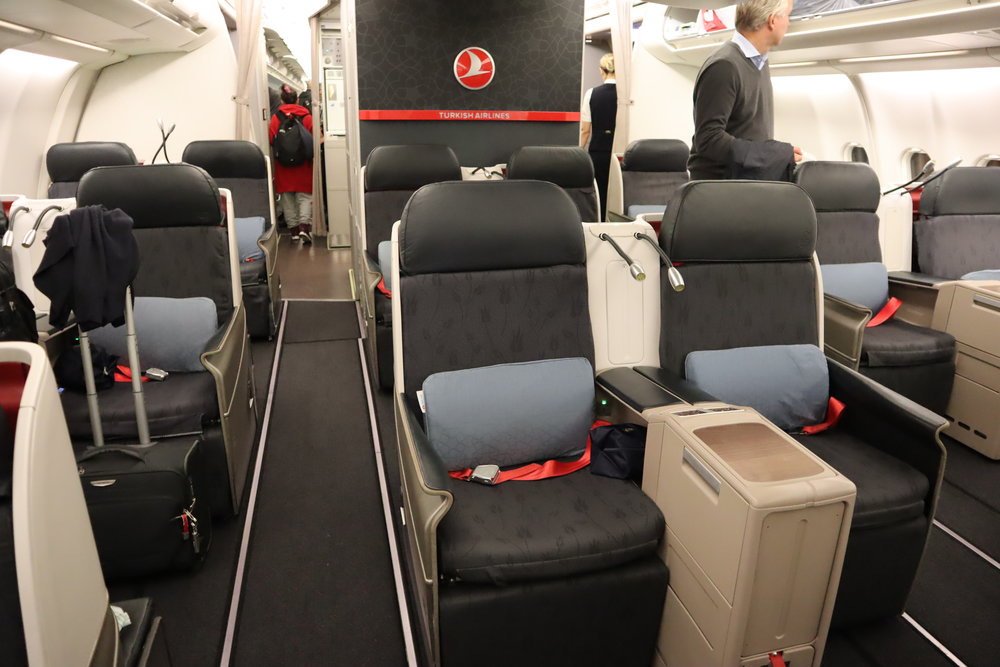
But let’s be honest, flying premium is really for our own comfort as adults, rather than for our kids.
Most babies and toddlers won’t know the difference, but for yourself, would you rather be seated with your lap infant on a nine-hour transatlantic flight in economy class, or in the comfort of a lie-flat bed in business class?
Most older kids won’t appreciate the fancier offerings of premium class either. In fact, if they are anything like my kids, they don’t care where they sit, as long as there’s a working screen in front of them.
2. For the pre-flight perks
Unless you already hold elite status with an airline, your family will likely appreciate some additional perks that come with flying in a premium cabin.
Priority check-in and boarding: When you’re travelling with kids, strollers, and a few carry-ons, anything that cuts down on wait times and expedites your transit from Point A to B gets a big checkmark in my travel book.
If you have young kids, most airlines will give you priority boarding regardless, but if your kids have outgrown the stroller stage, then you may no longer qualify for this. In that case, it’s nice to have priority boarding for some extra time to get the kids settled in their seats.
Another advantage is that you don’t have to compete for overhead cabin space for all your bags and gear.
Extra luggage allowance: The younger your kids are, the more you’ll appreciate the extra baggage allowance. Don’t worry, those days of packing formula, bottle warmers, baby food, car seats, diapers, and extra changes of clothes will come to an end!
Lounge access: Lounges provide a comfortable environment to unwind before boarding. Some lounges even have a play area for the kids.
Sure, you could wait at the boarding gate, but depending on how big your family is and how young your kids are, it can be difficult finding seats and space for everyone. Lounges can also get busy, but generally, it’s a quick turnover of passengers.
Complimentary food in lounges also ensures no one’s boarding with an empty stomach. Every parent knows that snacks are key to a happy child. Common lounge offerings include cheese, yogurt, cheerios, crackers, fruit and sandwiches. Bring a couple of small containers or Ziploc bags and pack some for the flight.

Why Fly in Economy Class with Kids?
Even though we would all love to be pampered on our flights, sometimes it just doesn’t make sense to make that premium flight redemption. Other times, we just don’t have a choice.
Here are some situations when you might want or need to opt for economy.
1. Short-haul flights
Even though some short-haul flights have a nice lie-flat seat in their premium cabins, you won’t be able to enjoy it for long, and the onboard service often pales in comparison to what’s offered on long-haul flights.
Unless travelling last-minute or during peak season, it may well be worth it to save the points altogether for a longer flight.
2. Temperament of your child(ren)
If your baby is colicky, or your toddler is going through the terrible threes, you run the risk of ruining the premium experience for the passengers around you.
Generally, those flying in premium cabins are less tolerant and understanding, especially if they paid full fare for their seats, hoping to get the additional peace and tranquillity they paid for.
In these situations, I recommend putting on your altruistic hat and saving the premium redemption for a later date.
3. Opportunity cost
If you take multiple trips in a year and you have a finite number of points, you’ll want to look at the opportunity cost of flying in economy vs. premium, or even one premium trip vs. another.
For example, consider a family of four that is planning to fly from Toronto to Tokyo on Air Canada business class. That would cost them 150,000 Aeroplan points per person at the lower end of the dynamic range, for a total of 600,000 Aeroplan points.
Now, what if that family decided they don’t mind flying in economy for that same trip? They would have enough points for another two trips to Hawaii and Costa Rica – all for the same price as a single business trip to Tokyo.
Round-trip cost | Total redemption cost | |
Business class | ||
Toronto (YYZ) | 150,000 points | 600,000 points |
Economy class | ||
Toronto (YYZ) | 90,000 points | 360,000 points |
Toronto (YYZ) | 35,000 points | 140,000 points |
Toronto (YYZ) | 25,000 points | 100,000 points |
Total | 150,000 points | 600,000 points |
(Of course, keep in mind that there are better redemption options to Tokyo than through Aeroplan, but I thought I would stick with the same points currency for comparison’s sake.)
Then, there’s the trade-off between flying business class for an entire family, or perhaps saving the points for a business class trip with just your spouse or partner instead.
Would I rather boook four round-trip business class tickets on a seven-hour flight to Lisbon for 480,000 Aeroplan points? Or am I better off saving it for a trip for two business class tickets on a 22-hour journey to Bali for 340,000 Aeroplan points for me and my husband?
I think I would suck it up in economy with the kids for the seven-hour flight.
4. Limited award space
Aside from points balances, this is probably the most common limiting factor for premium redemptions. The larger the family, the harder it becomes to find an airline that will have enough award space to accommodate.
The chart below displays the number of economy and business class award seats released by some of the major airlines, as well as when they release them.
I’ve constructed the chart based on some sample searches, so keep in mind that the award availability may still vary based on the route, aircraft, and points program used for the redemption.
Airline | Sample route | Economy class | Business class | When award seats are released (number of days before departure) |
Aer Lingus | YYZ–DUB | 5 | 1 | 330 days |
Air Canada | YYZ–HKG | 9+ | 9+ | 355 days |
ANA | JFK–HND | 2 | 2 | 355 days |
Cathay Pacific | YYZ–HKG | 6 | 4 | 360 days |
Etihad Airways | JFK–AUH | 5 | 2 | 330 days |
EVA Air | YYZ–TPE | 4 | 2 | 360 days |
Japan Airlines | JFK–HND | 8 | 5 | 360 days |
Lufthansa | YYZ–FRA | 9+ | 8 | 360 days |
Qatar Airways | YUL–DOH | 9+ | 4 | 361 days |
Singapore Airlines | LHR–SIN | 6 | 6 | 355 days |
Swiss | YUL–ZRH | 9+ | 9+ | 339 days |
TAP Air Portugal | YYZ–LIS | 9+ | 9+ | 360 days |
Turkish Airlines | YUL–IST | 9+ | 4 | 356 days |
You can see that most airlines are pretty generous in the number of seats released in economy class.
Meanwhile, if you are hoping to make a business redemption, there are still quite a few options if you can snag the seats quickly, with the exceptions of ANA, Etihad Airways, and EVA Air.
(Aer Lingus used to release quite a few business seats on its flights; however, doing a few searches, I have only been able to find one seat per flight for the coming year.)
Keep in mind that some airlines do release more award seat availability to their own programs – namely, Cathay Pacific through Asia Miles, Singapore Airlines through KrisFlyer, and ANA through Mileage Club. If you can’t find seats on these airlines through a partner airline reward program, then it’s best to book directly with them.
Clearly, in order to snag the limited award availability for your family, it’s best to book seats as soon as airlines open their booking calendars. This brings us to the importance of the last column of the table.
Keep in mind that when trying to figure out this date, you have to look at both when your airline of choice releases their seats and when the points program you’re using to redeem the award does the same. Generally, whichever has the lower number of days out is what you want to base your search on.
For example, on February 28, 2021, I searched for business class availability for New York JFK–Tokyo Haneda on Japan Airlines.
If I book through Japan Airlines, I can see availability out to February 23, 2022 (360 days out)…
…but if I book through American Airlines AAdvantage, I can only see availability out to January 25, 2022 (331 days out, when AAdvantage opens it award chart availability).
If you’re flying on an airline I haven’t listed, check out DealsPoints.com which has very comprehensive list of when airlines open their award space. And if you need assistance in figuring out the date that award seats will be released for your itinerary, here is a handy date calendar calculator.
5. Insufficient points balances
Depending on how big your family is and how quickly you accumulate points, you may find yourself in the situation where you don’t have enough points for a premium redemption.
To tackle this, it’s best to start planning trips at least two years out. Think about where your family wants to go. How will you get there? Which airlines will you fly? Which points currency will you need to focus on? Then plan your points earning strategies, all while aiming for the sweet spots to make those points go further.
When a Redemption Is Out of Reach
When your desired seats are unavailable or you’re short on the points, don’t give up just yet. Here are some strategies to continue working towards your dream family trip:
1. Book what you can first and book the rest later.
This works well if there are no cancellation fees, which many airlines have waived currently.
If you only have enough points for two seats, book them first. Or if you have to travel on certain dates and have enough points to book economy, then secure the economy seats first. Once you’ve accumulated enough points, book the remaining seats or rebook the economy flight into business.
With Air Canada flights specifically, you may also find that the points required for a flight can sometimes drop because of dynamic pricing, so it is always a good idea to double-check the cost of your flight every so often. Indeed, I had this happen with a flight of mine recently, which ended up saving me 36,000 Aeroplan points.
2. Monitor seat availability on ExpertFlyer.
ExpertFlyer is a great tool not only to search for award space, but also to set alerts for award seat availability. You’ll need to subscribe to their Premium plan for this feature, which costs US$9.99/month or US$99 annually.
I personally find it a worthwhile expense, but if you’re not sure, consider splitting the cost with another like-minded family. Don’t know anyone? Make a post on the Prince of Travel Elites Facebook group and see if anyone bites.
3. Consider premium economy.
This is a good option when you would like to fly business, but cannot find the award space or do not have enough points.
It’s not available on all airlines and routes, but when it is, it provides more space and better service than economy, and typically costs less than that of a business redemption. It’s definitely worth considering for long-haul flights.

4. Bid or pay for an upgrade.
If you don’t mind dishing out a bit of cash or waiting up until a couple days prior to departure to know what class you’re in, then redeem your points for economy, and bid or pay to upgrade your seats.
Keep in mind that the option to upgrade may not always be available or accepted, as it will depend on the number of unsold business class seats on a flight and if others are also bidding.
5. Use eUpgrades.
This is a great option to consider if you and your partner both have Aeroplan Elite Status and are planning to get to your destination via Air Canada. eUpgrade credits credits can be used to upgrade an economy class ticket to business class, thereby saving you quite a few points.
Be sure to read T.J.’s post on how to take advantage of this strategy. In the example below, redeeming for a one-way flight from Toronto to Dubai in the Latitude fare category can save you 13,100 Aeroplan points per person in exchange for 13 eUpgrade credits.
Keep in mind that each Aeroplan member that has eUpgrades can only upgrade themselves and one guest on the same booking (unless you’re a Super Elite member, in which case you can nominate a third person to use your eUpgrades throughout the year as well).
Therefore, to upgrade a family of four, you will need two people who have eUpgrades on their accounts, and each person will have to make a booking for themselves plus one child.
If you have a family of five (or more) like myself, then you can upgrade four passengers, and then make a direct business class redemption for the other child(ren). Alternatively, each member with eUpgrades can also upgrade a second fellow passenger using their eUpgrades at the airport on the day of travel, but that may be cutting things a little close.
6. Put the kids in economy.
Wait, did you read that right? Is that even possible? The answer is, it depends… and we will get into this in the next post, so stay tuned!
Conclusion
Most of us in the community strive to maximize the value out of our points and use them for aspirational experiences we would otherwise never pay for, so it usually makes the most sense to redeem points on premium flights.
But when you have kids, new challenges arise: the cost of redemptions significantly increases and finding award availability can be difficult, but it doesn’t always have to be. Hopefully this post has given you some insight into how to navigate some these challenges.
At the end of the day, economy class may well be the best choice for most family trips. Your kids probably won’t care either way, and it’s a great way to make your points go even further.
For myself, I also want to keep my kids grounded, so that when we do fly in business class, it can be a pleasant surprise for everyone rather than an expectation. Going forward, I will be making a combination of economy and premium redemptions for my future family travels.
How about you? What strategies do you use to book flights for your family? I look forward to hearing them in the comments below.


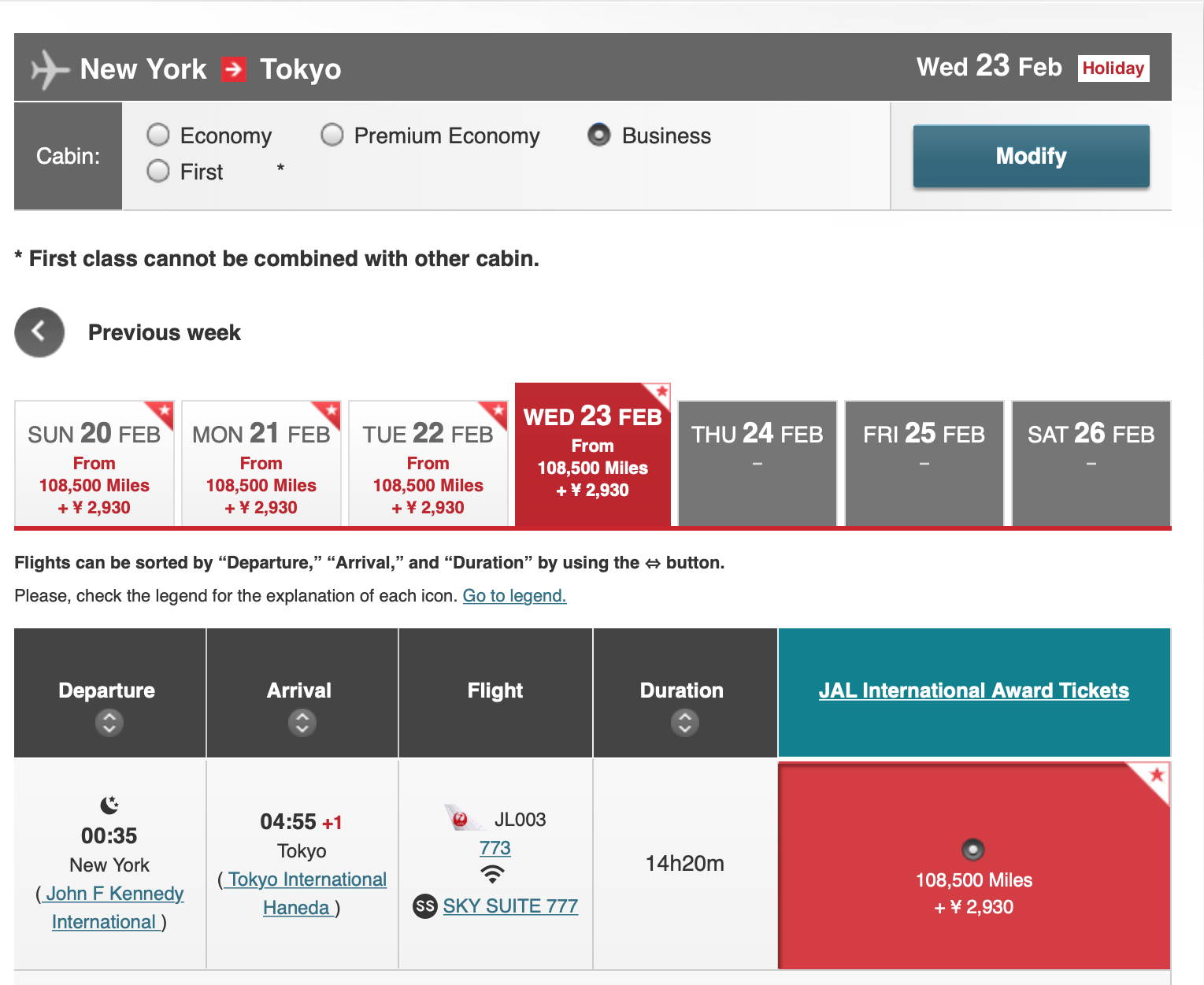
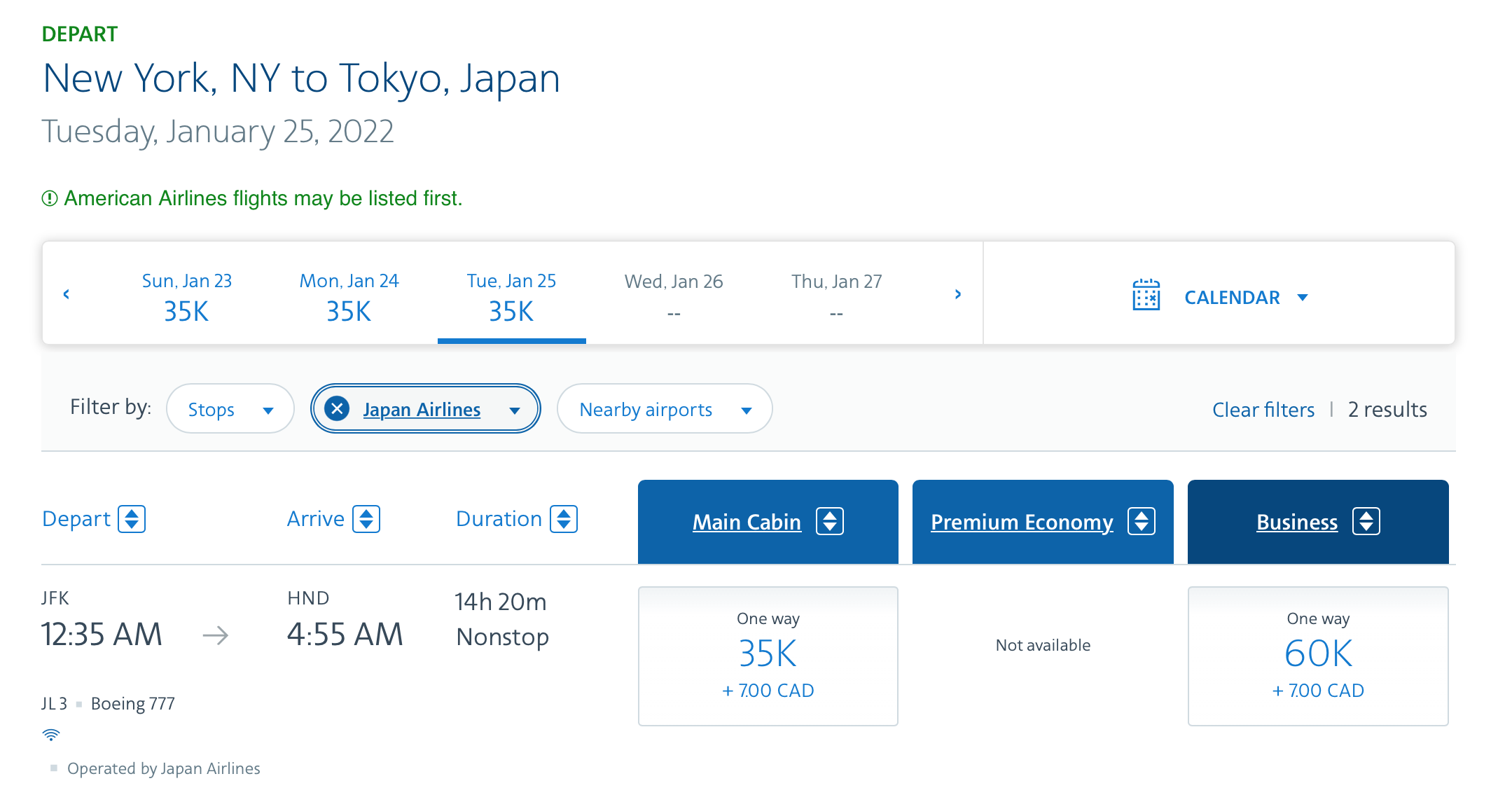
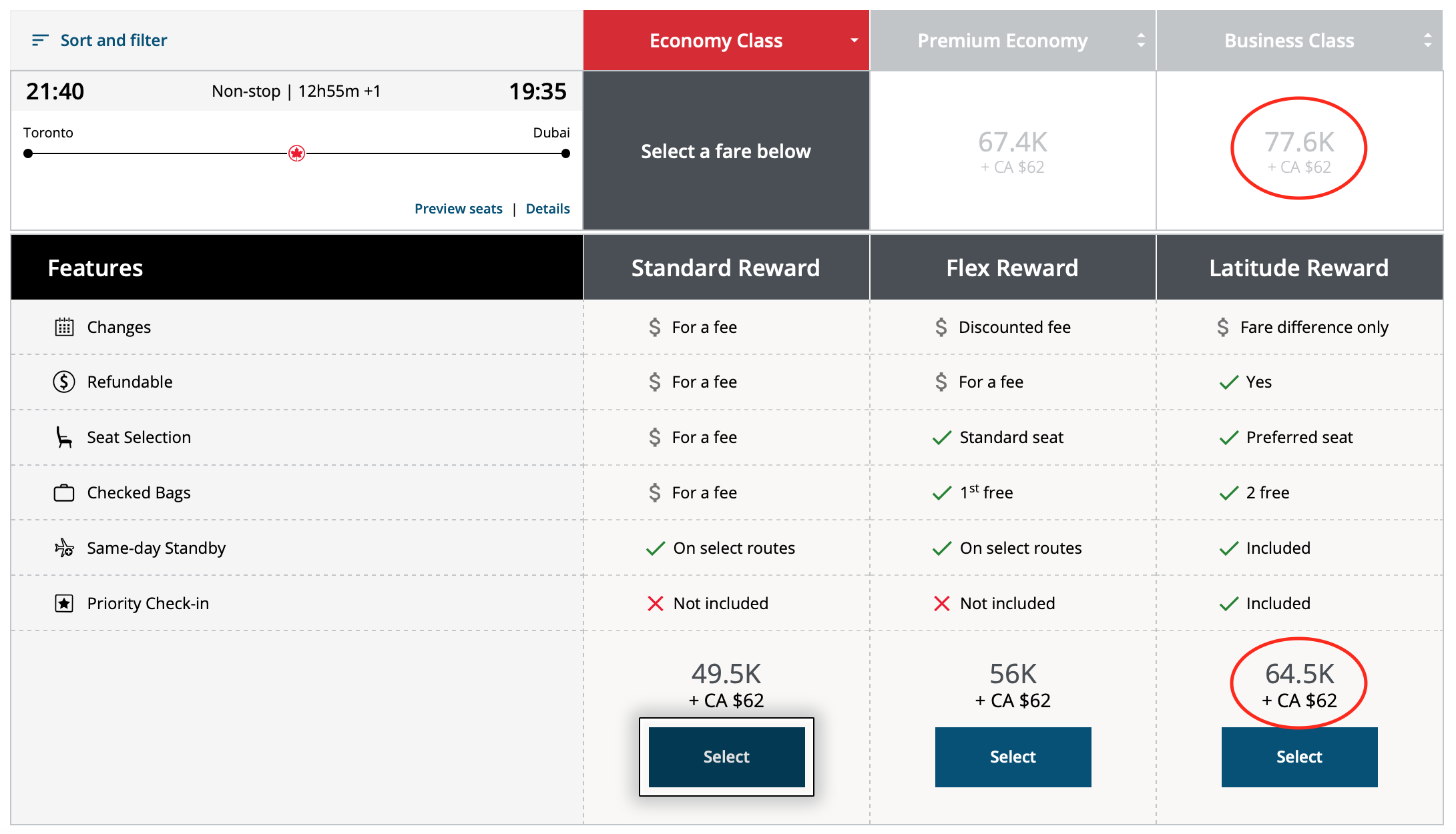










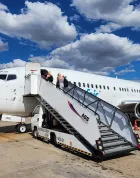
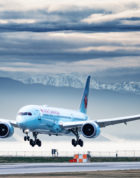

Just to add to this in terms of booking, be patient to wait for things to come available and take what you can get and work on changing it later, always continuing to look for better options after you have booked. Also, for larger families, splitting onto two flights with a parent on each is an option.
We have taken our family of 6 (occasionally 8, with in-laws) to Costa Rica, New York, Washington DC, London, France, Germany, Greece, Turkey, Egypt, Jordan, Hong Kong, Macau, Japan, China, Peru, Ireland, and Iceland, almost entirely in business class. It takes a lot of patience and a lot of points, but it can be done. Now that mine are teenagers, they are spending more time in economy while we travel in business, but I still try to get them into business when I can, so that they have an easier time sleeping and we can hit the road running when we arrive.
For Max, a 5 year old in economy with his parents in business class is an unaccompanied minor on every airline that I know of.
Have been considering Premium Economy class or family travel with 2 kids of 8 and 4 yr old. However, cannot find much info about any of the seats’ armrests can be raised or not. With kids they can sleep full length with arm-rest lifted. So would be nice if there are such Premium Economy seats, center row and/or side rows. Any insights ?
At least on Air Canada, they can’t. For young kids I don’t think Premium Economy is a good deal because of this caveat.
This was a very well written article. I will offer my suggestion: look out for business class deals paying cash. While it’s still not cheap, here are a couple of examples:
Flying from LAX/SFO to JFK/EWR in May or June for about US$1,100 round trip on United with a flat bed in both directions. That’s 11 hours of flat bed flying for under $1,000. Not too bad.
Spend Christmas/New Year in Italy: fly from SFO/LAX to Milan (close to Venice and Florence) for under US$2,000 round-trip on BA. Lots of other great business class deals to Europe for end of year travel. I really hope Americans will be welcome into the EU for tourism by the end of the year.
I’m sure there are also many awesome deals for Canadians. Check out this site:
https://www.flyertalk.com/forum/premium-fare-deals-740/
Flying business class can be an affordable luxury.
Right now it’s not possible with a 4. As for legal, sure, it may be legal, but that doesn’t make it right. At this point I just can’t imagine them not being a nuissance to oth other passengers (loud) and flight attendants (constantly asking for stuff). Maybe I should do a test run at a restaurant – sit them together in a booth and wife and I sit far away, but visible…
Fantastic article! I’m always looking for family travel content!! We have been traveling once a year as a family now since 2014, when the kids where 4 and 6. We snuck in a trip to Europe in Oct 2019 and just under the wire flying back from Hawaii on March 13th 2020. The kids are troopers in Economy and don’t know any different, it’s my husband who struggles with the long haul economy, and has told me he might not travel much anymore bc of it (big guy, seats are so small) . YIKES. . .so now I’m planning for a hopeful RTW trip in 2022 in business! I have been working my point game and am excited to surprise the fam with an all business class trip and not tell them till we are about to board. It will help with it being a present surprise and not an expectation of the finer things in life. . .. the kids still need to be ready to rough it has backpackers in their 20’s and travel the world on a dime and be ok with that 😉
To piggy back on what Alex said I’d put the kids in economy … with their grandparents … on a plane going somewhere else. 😉
Just kidding.
Sort of.
This article was spot on! Very little info on points redemption considerations for families with kids (both for fights and hotels) so this is very much appreciated. We want to do Hawaii with 2 kids within the next 2 years (timing based on pandemic conclusion) and are just debating on the route – thinking stopovers in San Fran and LA on both ends make the most sense, just figuring out how to optimize points required for the redemption.
One further consideration: flying your kids around the world in business class at a young age creates expectations that might not be met when they venture out on their own! Our kids are older but we have no problem sticking them in economy (or premium economy on longer-haul flights) and generally only spring for business on overnight flights so no one’s too cranky on arrival. Like you said, there’s no problem keeping kids occupied for 8-10 hours with some food and a screen!
For sure. I do believe in the importance of humble beginnings. It won’t be a norm for us, but once in a while it’s a nice treat ..for us, the parents 🙂
…Even better than your point 6 (Put the kids in economy) – leave them with grandma!
😉
Haha another home run of an article. Thanks! I can’t wait to do lie flat with my lap baby. You do zip lock bags too! We are all awaiting how to “put” the kids in economy ! The booking advice is spot on – grab them seats early.
Absolutely, if you have a chance to go on an adult-only trip, take it! We do this at least once a year. But we do enjoy travelling with our kids too 😉
I’m looking forward to the follow-up about putting the kids in economy. Right now we have an 8, a 6, and a 4, so it’s not possible, but I sure do want it.
Why is it not possible? I beleive age 5 and above is legal for kid to remain unsupervised at a seat. They aren’t going to choke or die or anything so why not?
The kind of random adult sitting beside a young child when the parent is out of reach can vary on the negative side from “just doesn’t like kids” to “white panel van operator”.
As someone not very kid-oriented it’s surprising to me so many parents would essentially place their kids (under 12, or so) next to randoms on a bus in the sky for hours and head off to the plush seats. Unaccompanied minors would have staff checking in on them at least.